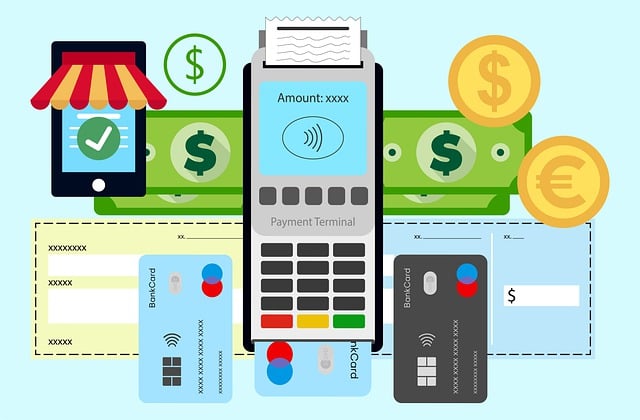Security clearance checks are crucial for verifying individuals' backgrounds and ensuring they meet security standards in industries handling sensitive information. These include diverse types such as criminal checks, education verification, employment screenings, credit assessments, and social media reviews. By combining these comprehensive assessments, organizations can make informed decisions to safeguard their operations and sensitive data. The evolving landscape includes integrating social media background checks, balancing security with privacy concerns, and maintaining data accuracy and protection.
“In today’s digital landscape, understanding security clearance checks is paramount for organizations dealing with sensitive information. This comprehensive guide explores the intricacies of these vital processes, from traditional criminal and education verification checks to modern employment background screenings and emerging social media assessments.
Discover how credit checks play a crucial role in enhancing security and learn best practices for implementing effective security clearance procedures, ensuring a robust and responsible approach.”
- Understanding Security Clearance Checks: A Comprehensive Overview
- Types of Background Checks: Criminal, Education, and Employment Verifications
- The Role of Credit Checks in Security Clearance Processes
- Emerging Trends: Social Media Background Checks and Privacy Concerns
- Implementing Effective Security Clearance Checks: Best Practices and Tips
Understanding Security Clearance Checks: A Comprehensive Overview

Security clearance checks are a crucial process that involves verifying an individual’s background to ensure they meet the required security standards for specific roles or access to sensitive information. These checks are essential components in many industries, especially those dealing with government secrets, critical infrastructure, and high-level corporate data. The primary goal is to identify potential risks associated with an individual’s history, ensuring that no clear security threats exist.
There are several types of background checks employed, each catering to different aspects of an applicant’s life. These include criminal checks to uncover any legal issues or convictions, education verification checks to confirm academic credentials, and employment background checks to assess previous work histories. Credit checks evaluate financial responsibility, while social media background checks delve into online activities, providing a comprehensive view of an individual’s character. By combining these various checks, organizations can make informed decisions, ensuring the safety and security of their operations.
Types of Background Checks: Criminal, Education, and Employment Verifications

Background checks are a crucial component of security clearance processes, helping to ensure that individuals seeking access to sensitive information or positions are who they claim to be and don’t pose any potential risks. These checks come in various types, each serving different purposes.
Criminal checks are designed to uncover any history of criminal activity, while education verification checks confirm the validity of academic qualifications. Employment background checks assess the integrity and reliability of an individual’s work history by verifying previous employment and reviewing references. Additionally, credit checks evaluate financial responsibility, and social media background checks delve into online activities to identify potential character flaws or connections to controversial content.
The Role of Credit Checks in Security Clearance Processes

In the intricate landscape of security clearance processes, various types of background checks play a pivotal role in ensuring the integrity and safety of sensitive environments. Among these, credit checks stand out as a crucial component. They delve into an individual’s financial history, offering insights into their reliability and potential risks. By examining credit reports, organizations can uncover undisclosed debts, bankruptcy filings, or fraudulent activities, which might indicate a candidate’s fitness for positions requiring high levels of trust.
Complementing credit checks, other forms of background investigations such as criminal checks, education verification, and employment background checks provide comprehensive assessments. Criminal checks help identify any prior convictions or outstanding warrants, while education verification ensures academic credentials are authentic. Employment background checks further expose potential red flags by scrutinizing past employment records and references. Even social media background checks are increasingly employed to unearth online activities that might reflect poorly on a candidate’s character or loyalty. This multi-faceted approach ensures that security clearance decisions are well-informed and aligned with the highest standards of safety and integrity.
Emerging Trends: Social Media Background Checks and Privacy Concerns

In recent years, the landscape of security clearance processes has evolved significantly due to emerging trends that challenge traditional methods. One notable development is the integration of social media background checks, which have become increasingly prevalent in various industries. As more people conduct their lives extensively online, companies and organizations are utilizing advanced algorithms and data analytics to screen applicants through multiple digital touchpoints, including social media platforms. This shift raises important privacy concerns as it delves into an individual’s personal life, conversations, and interactions that were previously considered off-limits for traditional background checks.
The use of social media for background screening presents a double-edged sword. On one hand, it allows for a more comprehensive view of an individual’s character, associations, and potential risks. However, it also raises ethical and legal questions regarding data privacy, consent, and the potential for bias based on online presence. With various types of background checks, such as criminal checks, education verification, employment history scrutiny, and credit checks, already in place, the addition of social media screening adds another layer of complexity to an already delicate balance between security and individual rights.
Implementing Effective Security Clearance Checks: Best Practices and Tips

Implementing effective security clearance checks is paramount in safeguarding sensitive information and mitigating risks within organizations. Beyond basic criminal checks, a comprehensive approach involves diverse background verification methods. This includes education verification checks to confirm credentials, employment background checks to assess historical performance, and credit checks for financial health assessments. Even social media background checks have become critical tools to uncover potential red flags that traditional methods might miss.
Best practices emphasize the importance of combining multiple types of background checks to create a holistic profile. For instance, correlating criminal records with education and employment history can provide deeper insights. Organizations should also ensure data accuracy and privacy protection during the process. Regular updates and cross-referencing with reliable sources are essential tips to maintain the integrity of security clearance checks, fostering a culture of trust and security.
